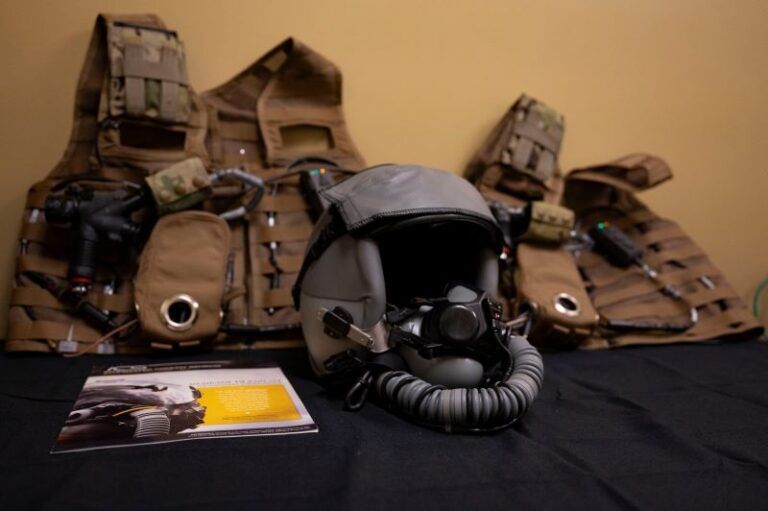The US Air Force has completed flight testing a new physiological monitoring system to protect fighter pilots from losing consciousness.
The US Air Force Research Laboratory (AFRL) -developed Integrated Cockpit Sensing (ICS) system fuses data from sensors that collect physiologic markers from pilots. The system is built into the pilot’s helmet and base layer and provides data about the pilot and the operating environment holistically during flight.
The data collected by ICS aims to protect pilots by issuing a warning if measures such as blood oxygen levels are problematic.
Chris Dooley, lead ICS engineer at the AFRL’s human effectiveness directorate said, “It aggregates measures of oxygen being provided to the brain, heart rate, respiration rate and skin temperature, markers that provide context and help us understand how the pilot is responding to what he or she is asked to do.
“This data helps us look at risks such as hypoxia and cabin depressurization as well as stress responses to different phases of flight.”
The flight tests were run during March at the US Air Force Test Pilot School (TPS) at Edwards Air Force Base, California, and at Nellis Air Force Base, Nevada in January and February.
Six TPS student test pilots and engineers worked with the ICS team to translate customer requirements into test objectives, ultimately developing and executing a comprehensive flight test project.
“We wanted to be able to help the ICS team accelerate their technology through flight tests,” said Wei ‘Fug’ Lee, TPS director of research and the lead adviser for this project. “The goal is to demonstrate the ICS’s ability to measure physio and environmental data and assess its utility in recognizing physiological insults.
“The team broke the plan into several specific test objectives to characterize the system’s accuracy in measuring aircraft state data.”
The tests also examined the relationship between physiological parameters, cognitive performance and flying performance.
Captain Tyler Morris, student flight test engineer at the TPS and project lead said, “Initial testing has shown that the ICS can detect certain oxygen system malfunctions and the planned development of integrating an alerting system may prove to be critical in keeping aircrew safe.”
In one test, the students intentionally swapped to an oxygen mask with a faulty inhalation valve, increasing exhalation resistance. In another, they temporarily disconnected the oxygen supply while a copilot had control of the aircraft. ICS detected the issue in both instances.
The ICS system has been in development for five years. The system recently received approval to fly on the F-16.
Crucially, ICS merges sensors and data in real-time to provide feedback to pilots. Before ICS, investigators could only merge data from sensors after incidents to determine what went wrong.
AFRL engineers worked with BAE Systems, formerly Ball Aerospace, to build the software and hardware for ICS and resolve data access issues. The team also addressed design features to make the system more acceptable to pilots.
Prototype testing started in 2022 with airworthiness tests including explosive decompression, rapid decompression, wind blast, manned and unmanned testing in a centrifuge and altitude chambers, as well as electromagnetic interference and susceptibility tests, all ensuring the system would be safe and effective for pilots to use on aircraft.
The development of ICS also follows a recommendation made in 2020 by the National Commission on Military Aviation Safety to proactively monitor aircrew physiology.
Lt. Col. Robert “SWAG” Russell, squadron commander, 422nd Test and Evaluation Squadron said, “This recommendation was borne out of a rash of fatal mishaps where pilots likely lost consciousness while flying, possibly due to oxygen starvation.”
“There are a lot of qualifiers like ‘likely’ and ‘possibly’ because while we collect millions of data points on the airplanes we fly, we monitor and collect zero data on pilots.”
Following the flight tests this year the AFRL is compiling the feedback received from pilots to further refine the system.





